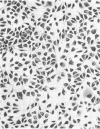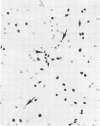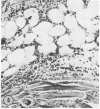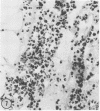Abstract
Although Mycobacterium ulcerans elicits extensive necrosis of human skin and subcutaneous tissue, the specific cause of the necrosis has never been elucidated. In an attempt to define a toxic substance, 18 strains of M. ulcerans were inoculated into mice, and the progress of each infection was observed and compared with infections of other mycobacteria, including M. cheloni, M. marinum, and M. bovis. Culture filtrates and viable organisms of each of these mycobacteria were inoculated onto tissue culture cells. Inoculation of mouse footpads with M. ulcerans resulted in progressive infections, leading to ulceration and eventual death. Strains of M. cheloni, M. marinum, and M. bovis did not produce progressive infections in the mice. Culture filtrates of M. ulcerans produced severe cytopathogenic effects on tissue cells, but washed, viable organisms of the same strains had no cytopathogenic effect. Culture filtrates and viable organisms of M. cheloni, M. marinum, and M. bovis did not produce a cytopathogenic effect on the tissue cells. Viable organisms of selected strains of M. ulcerans and the culture filtrates of the same strains were inoculated into guinea pig skin. The culture filtrates and the viable organisms both caused focal necrosis and focal inflammation, changes that resemble those in the naturally occurring infection in man. Preliminary purification of the culture filtrate by ultrafiltration indicates that the toxic fraction has a molecular weight of approximately 100,000, and temperature studies indicate that the toxic fraction is heat labile.
Full text
PDF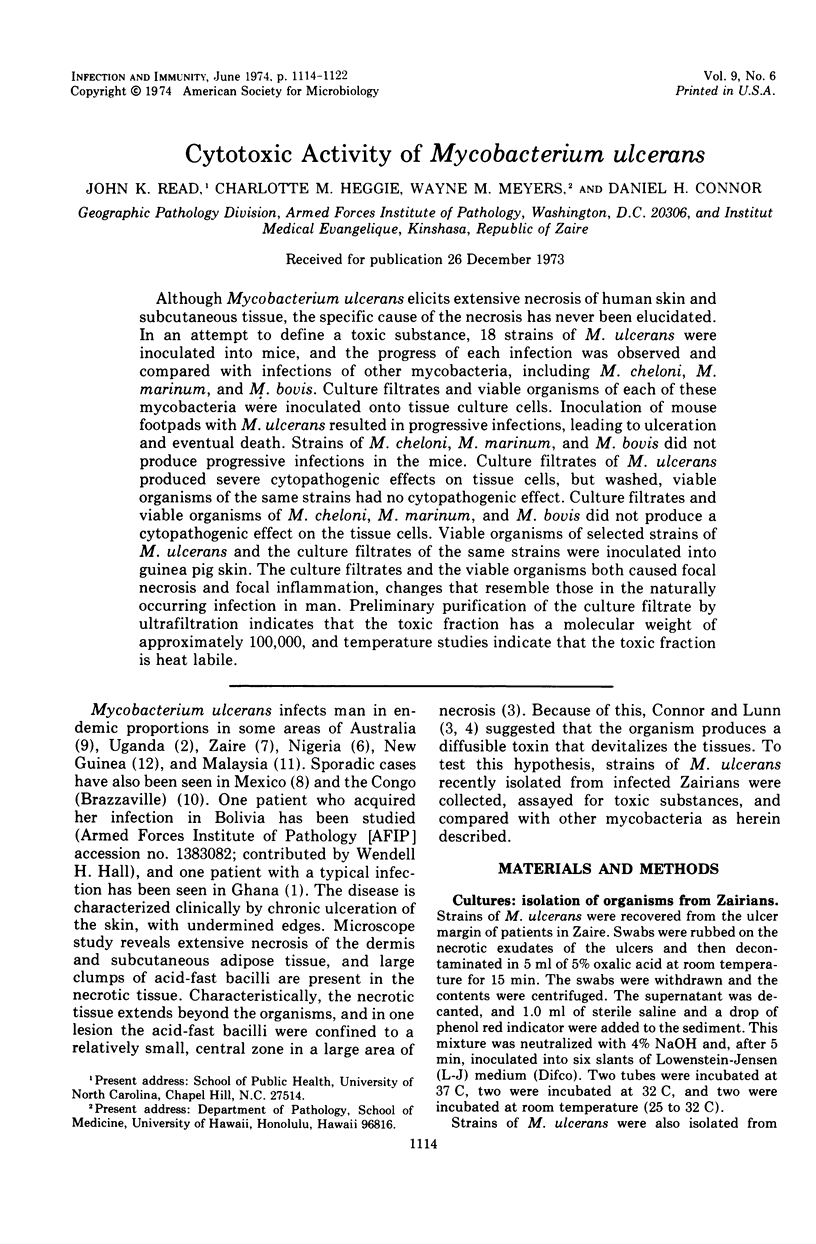
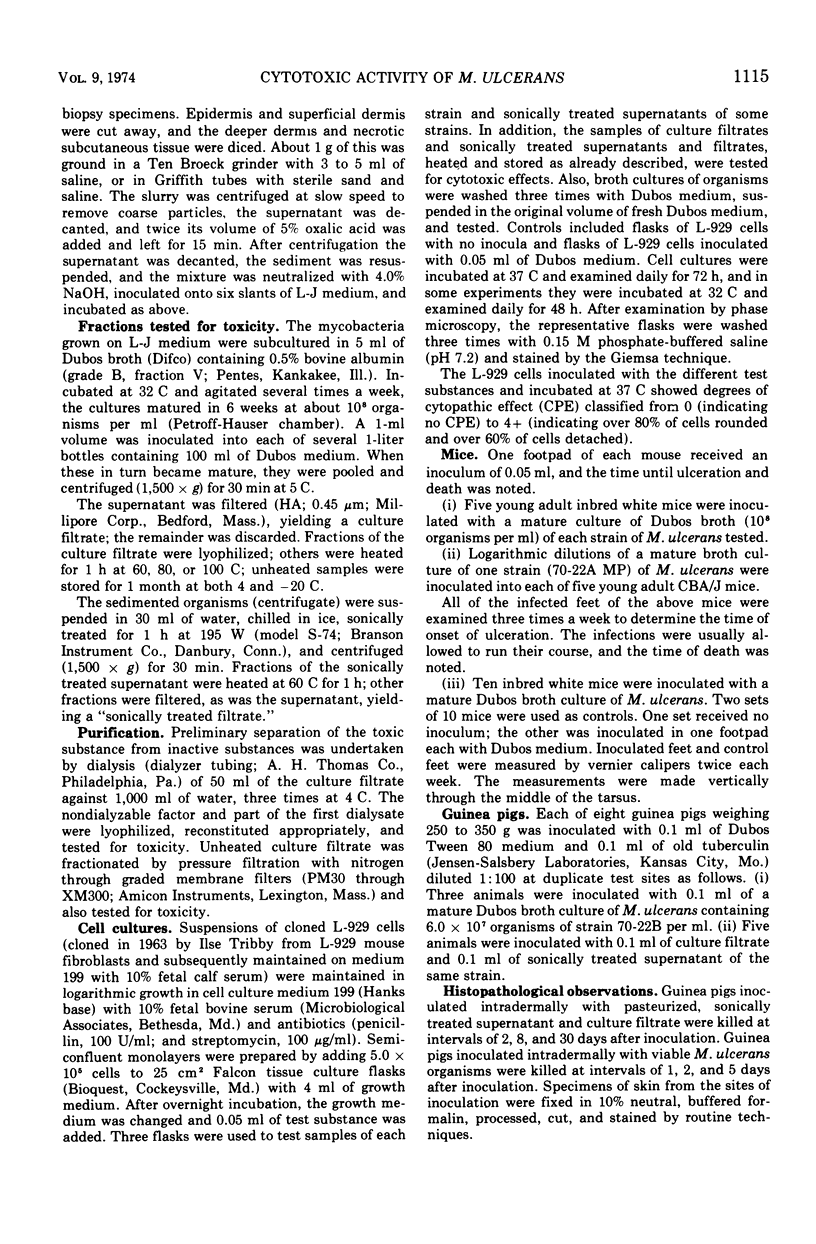
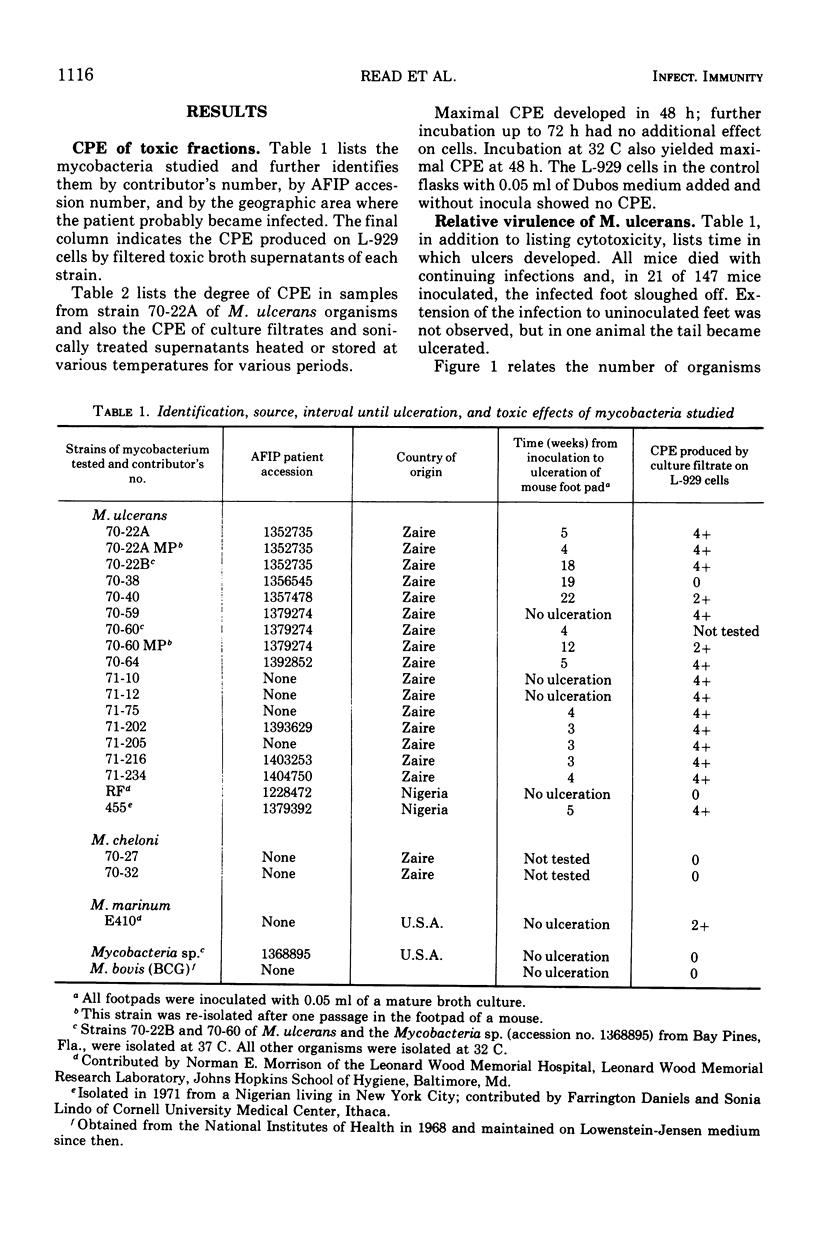
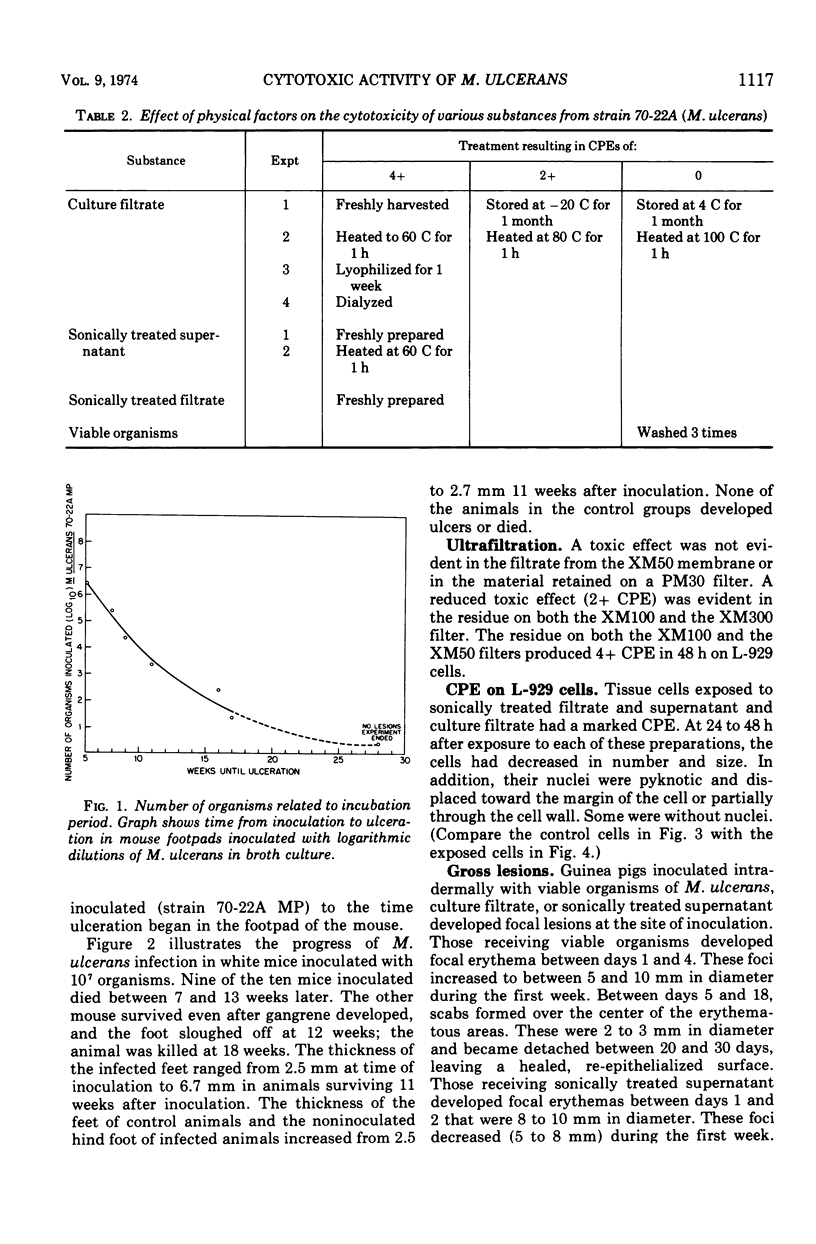
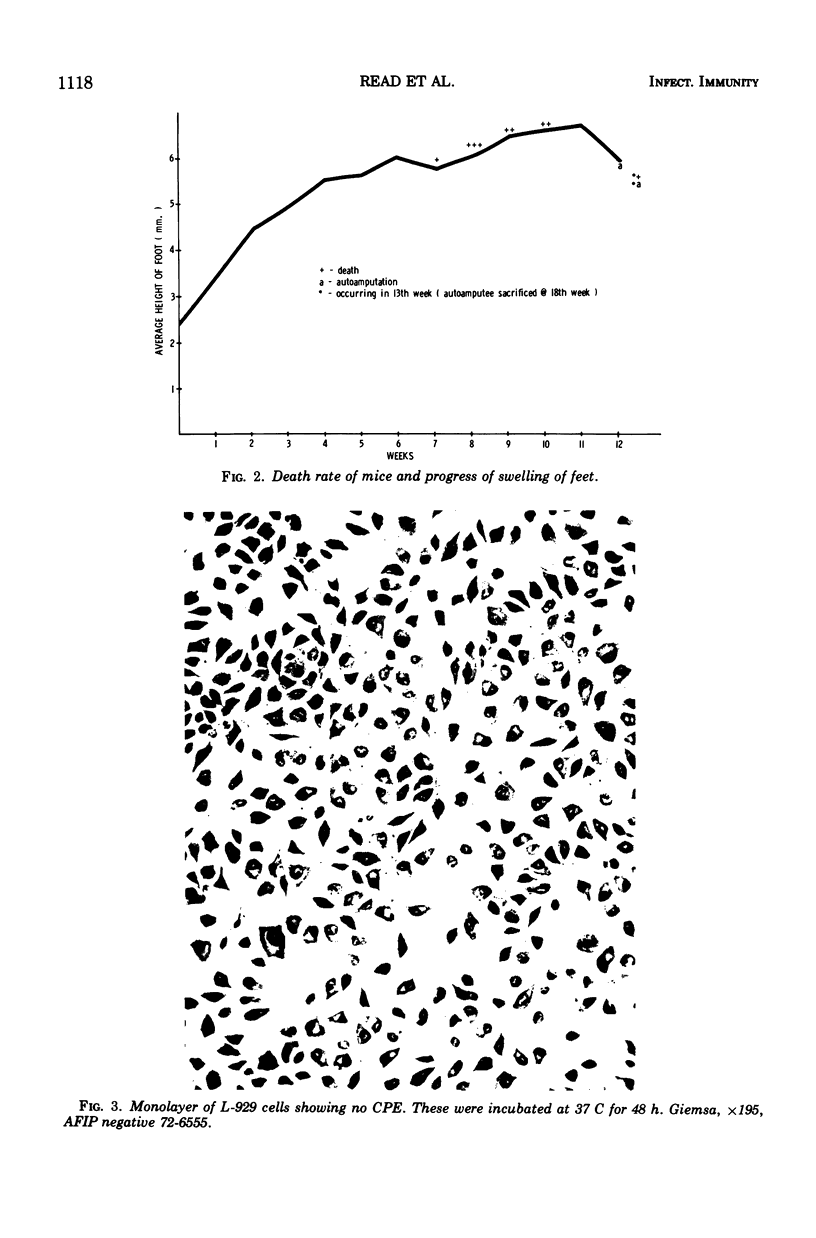
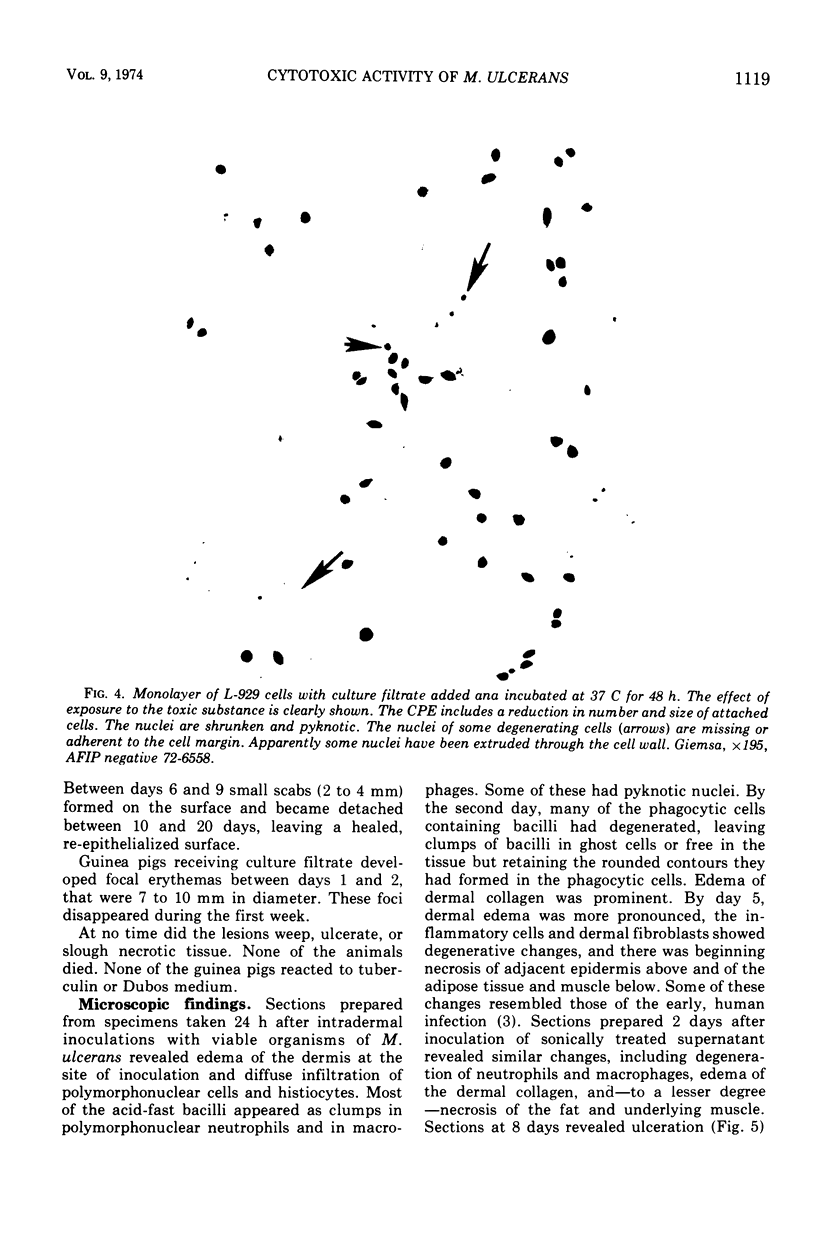
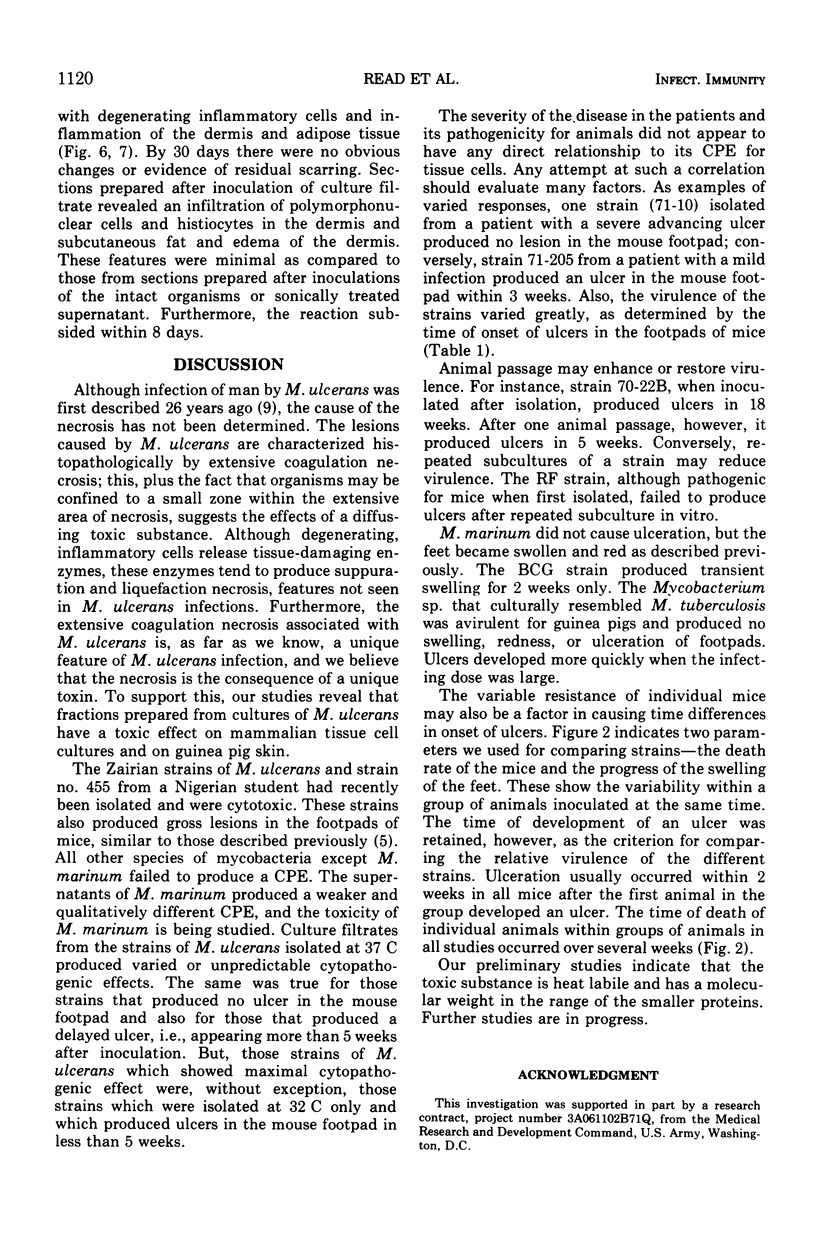
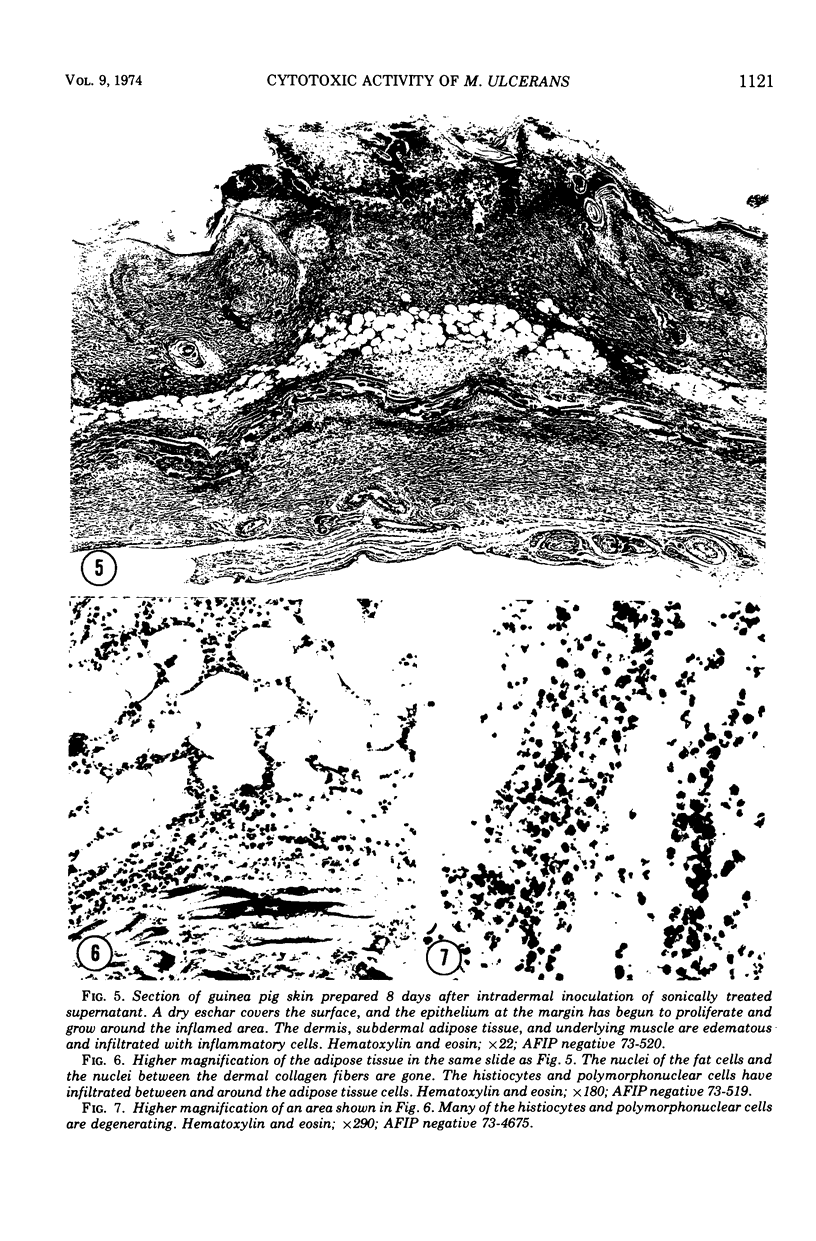
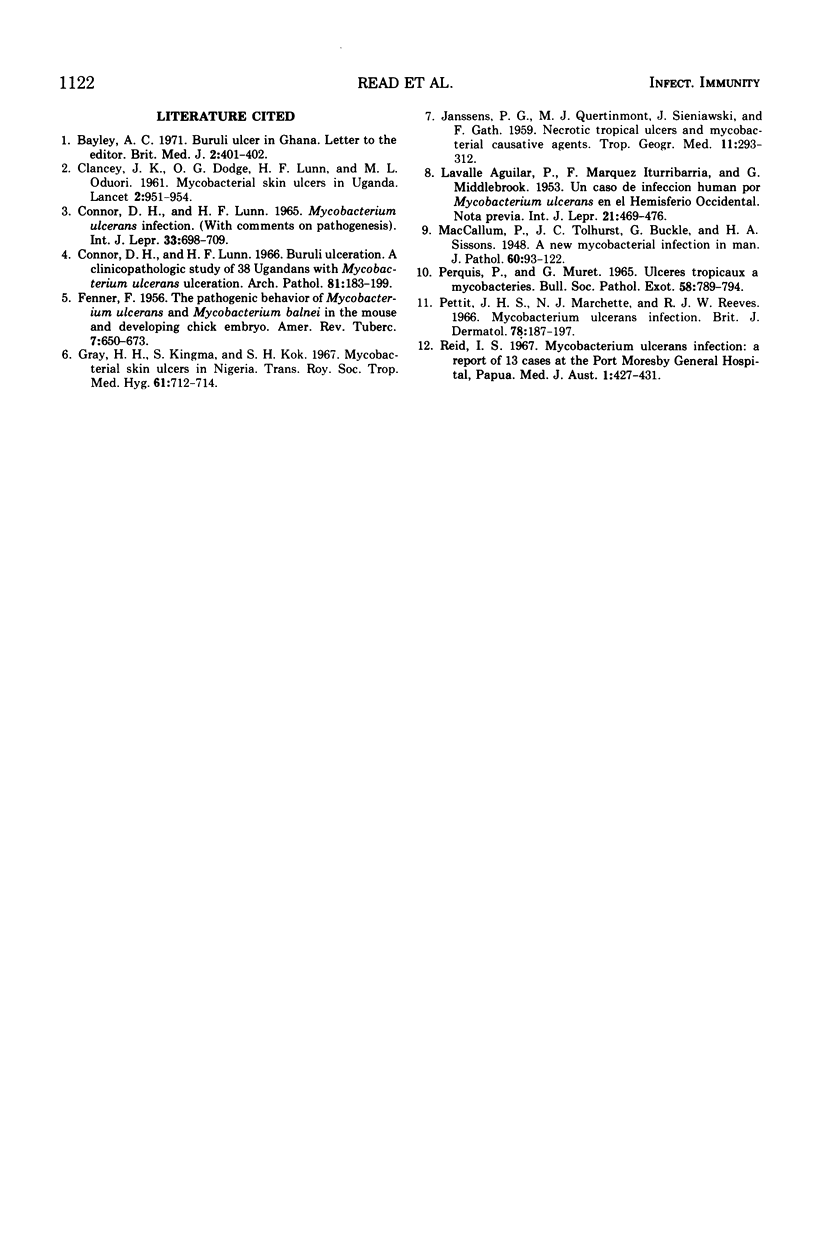
Images in this article
Selected References
These references are in PubMed. This may not be the complete list of references from this article.
- AGUILAR P. L., ITURRIBARRIA F. M., MIDDLEBROOK G. Un caso de infeccior humana por Mycobacterium ulcerans en el hemisferio occidental; nota previa. Int J Lepr. 1953 Oct-Dec;21(41):469–476. [PubMed] [Google Scholar]
- Bayley A. C. Buruli ulcer in Ghana. Br Med J. 1971 May 15;2(5758):401–402. doi: 10.1136/bmj.2.5758.401-c. [DOI] [PMC free article] [PubMed] [Google Scholar]
- CLANCEY J. K., DODGE O. G., LUNN H. F., ODUORI M. L. Mycobacterial skin ulcers in Uganda. Lancet. 1961 Oct 28;2(7209):951–954. doi: 10.1016/s0140-6736(61)90793-0. [DOI] [PubMed] [Google Scholar]
- Connor D. H., Lunn H. F. Mycobacterium ulcerans infection (with comments on pathogenesis). Int J Lepr. 1965 Jul-Sep;33(3 Suppl):698–709. [PubMed] [Google Scholar]
- FENNER F. The pathogenic behavior of Mycobacterium ulcerans and Mycobacterium balnei in the mouse and the developing chick embryo. Am Rev Tuberc. 1956 May;73(5):650–673. doi: 10.1164/artpd.1956.73.5.650. [DOI] [PubMed] [Google Scholar]
- Gray H. H., Kingma S., Kok S. H. Mycobacterial skin ulcers in Nigeria. Trans R Soc Trop Med Hyg. 1967;61(5):712–714. doi: 10.1016/0035-9203(67)90139-3. [DOI] [PubMed] [Google Scholar]
- JANSSENS P. G., QUERTINMONT M. J., SIENIAWSKI J., GATTI F. Necrotic tropical ulcers and mycobacterial causative agents. Trop Geogr Med. 1959 Dec;11:293–312. [PubMed] [Google Scholar]
- Perquis P., Muret G. Ulcères tropicaux a mycobactéries. A propos de 2 observations. Bull Soc Pathol Exot Filiales. 1965 Sep-Oct;58(5):789–795. [PubMed] [Google Scholar]
- Pettit J. H., Marchette N. J., Rees R. J. Mycobacterium ulcerans infection. Clinical and bacteriological study of the first cases recognized in South East Asia. Br J Dermatol. 1966 Apr;78(4):187–197. doi: 10.1111/j.1365-2133.1966.tb12204.x. [DOI] [PubMed] [Google Scholar]
- Reid I. S. Mycobacterium ulcerans infection: a report of 13 cases at the Port Moresby General Hospital, Papua. Med J Aust. 1967 Mar 4;1(9):427–431. doi: 10.5694/j.1326-5377.1967.tb21363.x. [DOI] [PubMed] [Google Scholar]



